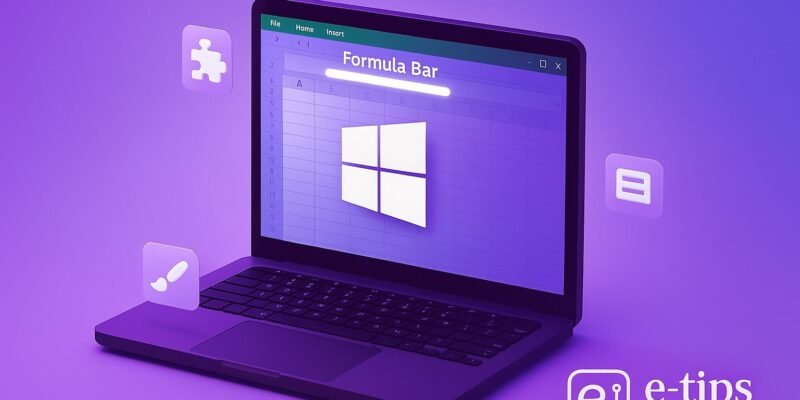The easiest ways to run Windows on any Mac — including Apple Silicon.
Need to run Windows-only apps or games on your Mac? Whether you’re using an Intel-based Mac or the latest Apple Silicon (M1, M2, or M3), you’ve got solid options in 2025 to run Windows 10 efficiently.
In this guide, you’ll learn how to install and run Windows 10 on a Mac, step by step. We’ll cover virtual machines like Parallels Desktop, Boot Camp (for Intel Macs), and even free alternatives like UTM. By the end, you’ll be able to run Windows software smoothly on your Mac without major compatibility issues.
With performance improvements and better virtualization support in 2025, running Windows on macOS is more seamless than ever. Let’s dive in.
Wanna run windows 11 instead? Check out this guide.
Step-by-Step Guide
Option 1: Use Parallels Desktop (Best for Most Users)
- Download Parallels Desktop
- Visit parallels.com and download the latest version of Parallels Desktop for Mac.
- Install Parallels Desktop
- Open the
.dmgfile and follow the on-screen installer. You may need to grant permissions in System Settings > Privacy & Security.
- Open the
- Download Windows 10 ISO
- Get the official ISO from Microsoft’s website: https://www.microsoft.com/software-download/windows10
- Create a New Virtual Machine
- Open Parallels, click + New, choose Install Windows or another OS from a DVD or image file, and select the ISO.
- Configure Virtual Machine Settings
- Choose performance presets like Productivity or Gaming.
- You can adjust CPU and RAM allocation manually if needed (e.g., 4 CPU cores, 8GB RAM for better performance).
- Complete Installation
- Let the setup run. Windows will install like on a regular PC.
- Activate with your license key or continue unactivated with limited features.
- Install Parallels Tools
- Once inside Windows, Parallels will prompt you to install Parallels Tools for better performance and integration (drag-and-drop, clipboard sync).
Option 2: Use Boot Camp (Intel Macs Only)
- Open Boot Camp Assistant
- Go to Applications > Utilities > Boot Camp Assistant.
- Download Windows 10 ISO
- Get the ISO from Microsoft (same link as above).
- Create a Partition for Windows
- Choose how much space to allocate (at least 64GB recommended).
- Install Windows
- Boot Camp will restart your Mac and start the Windows installer.
- Follow prompts to install and set up Windows.
- Install Boot Camp Drivers
- After setup, the installer will load Apple’s drivers automatically.
❗ Boot Camp is not available on M1/M2/M3 Macs. Use virtualization instead.
Option 3: Use UTM (Free & Apple Silicon Compatible)
- Download UTM
- Go to utm.io and download the latest version.
- Download Windows 10 ARM ISO
- For Apple Silicon Macs, get the Windows 10 ARM version from Microsoft’s Insider Preview or other trusted sources.
- Create a New VM
- Open UTM, click Create a New Virtual Machine, and follow the wizard.
- Configure Settings
- Use presets for Windows, allocate at least 4GB RAM and 2 CPU cores.
- Install Windows
- Boot using the ISO and go through the installation process.
- Install SPICE Tools (Optional)
- For better performance and usability, install SPICE guest tools within Windows.
Pro Tips & Workflow Improvements
- Parallels Coherence Mode: Run Windows apps side-by-side with macOS apps for a seamless experience.
- Snapshot Your VM: Always take snapshots before big changes—this helps restore easily if something breaks.
- Use Shared Folders: Parallels and UTM let you share Mac folders with Windows for easy file access.
- Gaming on Mac: Parallels has improved GPU support, but for heavy games, consider cloud gaming platforms.
- License Considerations: You can use Windows unactivated for non-personal use, but some features will be limited.
Advanced Use Case: Automate Windows Launch via Script
Want Windows to auto-launch when you start your Mac?
- On Parallels, enable Start Automatically in VM settings.
- You can also script VM launch via command line:
prlctl start "Windows 10"This is useful for automation workflows or kiosk setups.
Troubleshooting & Common Mistakes
- “No Bootable Device” Error: Ensure your ISO file is valid and correctly selected.
- VM is Slow: Increase RAM/CPU allocation, disable visual effects in Windows.
- Activation Issues: Make sure you use a valid product key. Windows 10 can run unactivated with limited customization.
- Networking Problems: Restart Parallels Tools or adjust VM network settings to “Shared Network”.
- Mouse/Trackpad Lag: Enable “Optimize for Games” or install guest tools for better integration.
Conclusion
Running Windows 10 on a Mac in 2025 is more versatile than ever—even with Apple Silicon. Whether you need Windows for development, testing, or specific apps, Parallels Desktop and UTM offer fast, flexible solutions. Intel users still benefit from Boot Camp’s native performance.
Take time to explore each option and choose what fits your workflow. Next, consider learning how to share files between macOS and Windows VMs or try installing Windows 11 ARM for the latest features.

